Critical Making, U.C. Berkeley
Spring 2020
Skills
Fabrication: Laser Cutting, Electronic Assembly
Computer: Arduino, Fusion 360
Team
Interdisciplinary Graduate Designers Group of Four (Computer Science, Geography, Music)
Project Summary
To address and protest the confluence of light-pollution, anti-black surveillance systems, and the ongoing efforts of policing in Oakland, Guerilla Streetlight Projectors are proposed to subvert and draw attention to these systems. The goal of these protest objects is to co-opt high-lumen streetlights, technologies of surveillance, for use as interactive technologies of memorialization, remembering and honoring the struggles of Black Panthers and their ongoing battle for self-determination and freedom. The design of the streetlight projector is meant to be simple and replicable for individuals to iterate themselves and transfer to their own protest of perpetuated injustices.

Isometric view of the final streetlight projector prototype.
Background
Despite their effectiveness are a topic of debate, the installation of high-lumen streetlights continue to often be the ad-hoc solution of local government and city officials charged with ameliorating and policing crime “hotspots”. In Uptown and West Oakland, the installation of anti-crime lights have uneven and disproportionate geographies, concentrated primarily in low-income and predominantly black and brown neighborhoods. Paired with cameras, sensors, and sometime microphones, they perpetuate intrusive and targeted surveillance tactics to disproportionately criminalize and discipline communities of color.
These surveillance and policing efforts in Oakland are not contemporary issues but reflections of historical inequality that ultimately birthed the Black Panther Party in 1966. However despite the historical significance of this civil rights activist group, Fredricka Newton, the widow of Huey P. Newton, called attention to the fact that the city of Oakland does not have any memorials or monuments to neither the iconic civil rights era or Black Panther Party. There are no museums or placards of commemoration in the city, “it is like they never existed” she said.
In the current day Oakland has become a hotbed increasing income inequality, homelessness, and decades long efforts of targeted gentrification. It is no coincidence that the targeted surveillance and lack of recognition of civil rights activist seems to fit in a disruptive revision of the city.
Design Overview
The system is suspended from the light and focuses etched acrylic images of the Black Panther Party through a commercial camera lens, while also casting a large shadow around the image to amplify the projection and reduce light pollution. Multiple images can be cycled through using a laser up to 30 feet away to activate a servo motor through a series of photosensors protruding from the bottom of the base. The design of the streetlight projector is meant to be simple and replicable for individuals to iterate themselves.
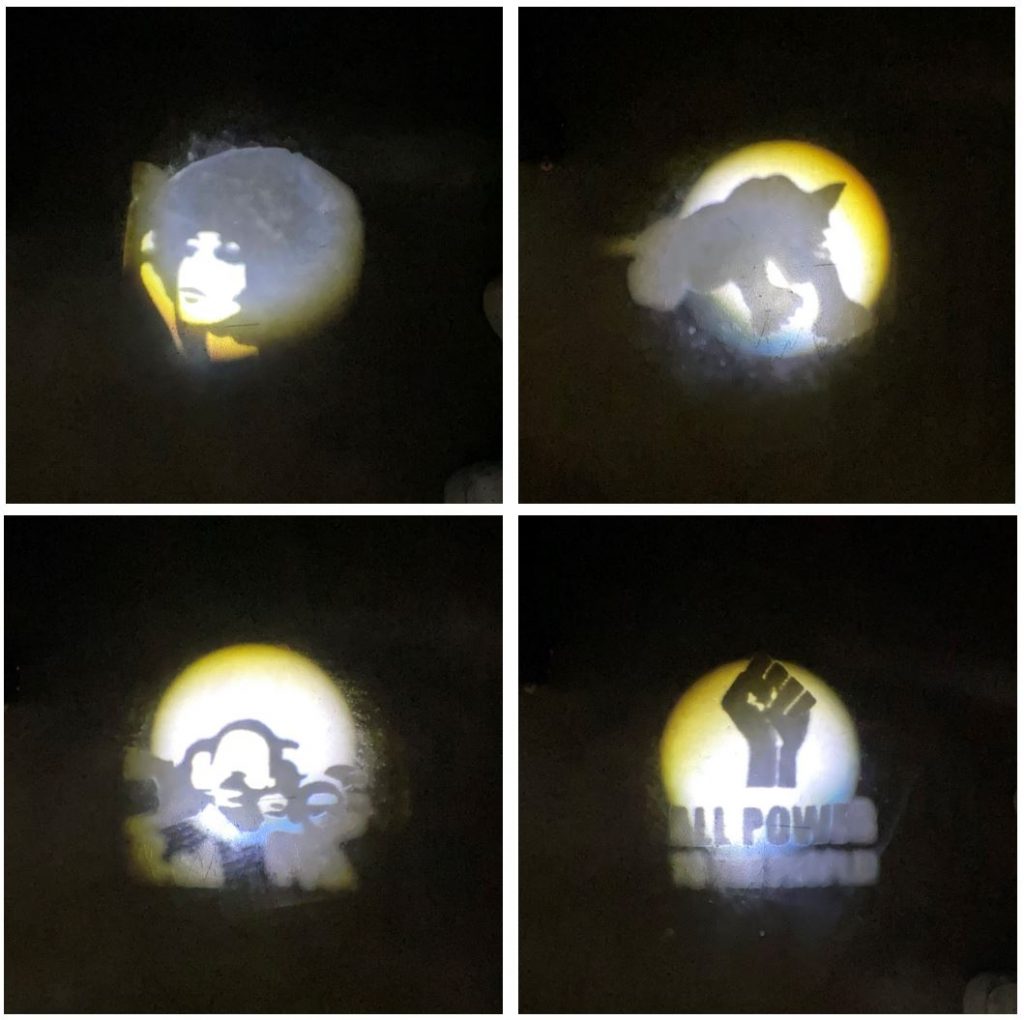
Projections from the prototype for each of the four images etched on the acrylic.
The current design’s components are assembled using the laser cut clipboard board as a base and support structure. The system can quickly be assembled or disassembled since hooks detach to extract the lens, the servo stand can be removed, further height rings can be added between the servo and lens for focusing, and the acrylic plate can be switched and customized.
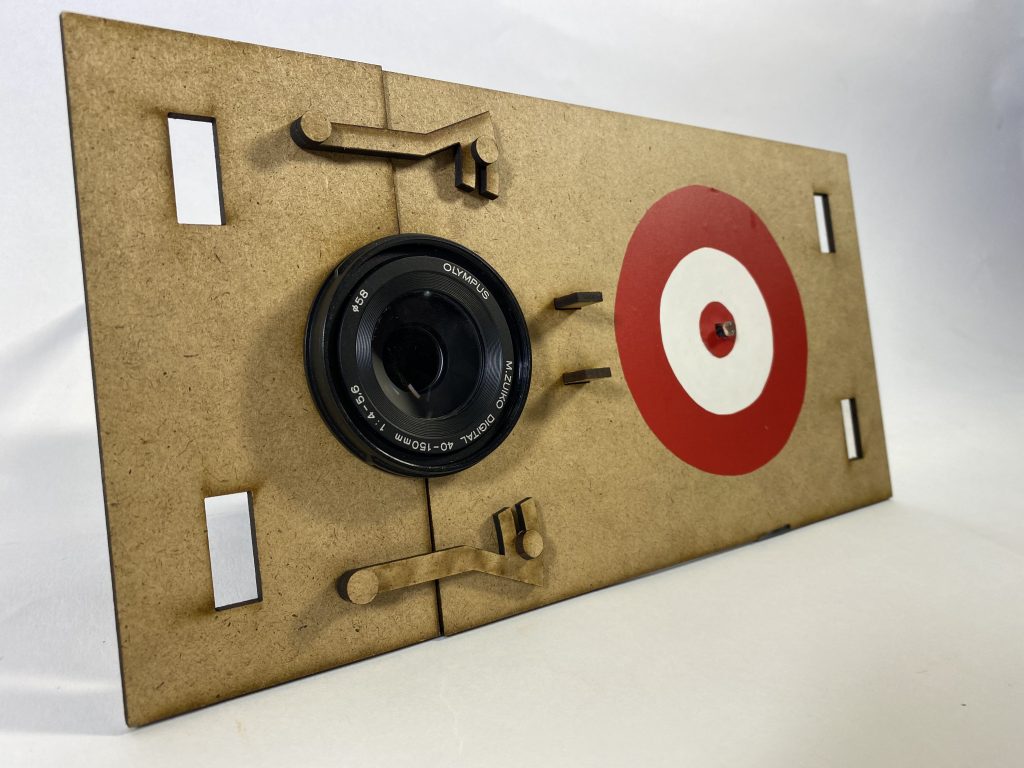
The underside of the final assembly, highlighting the photosensors in the center of the target.
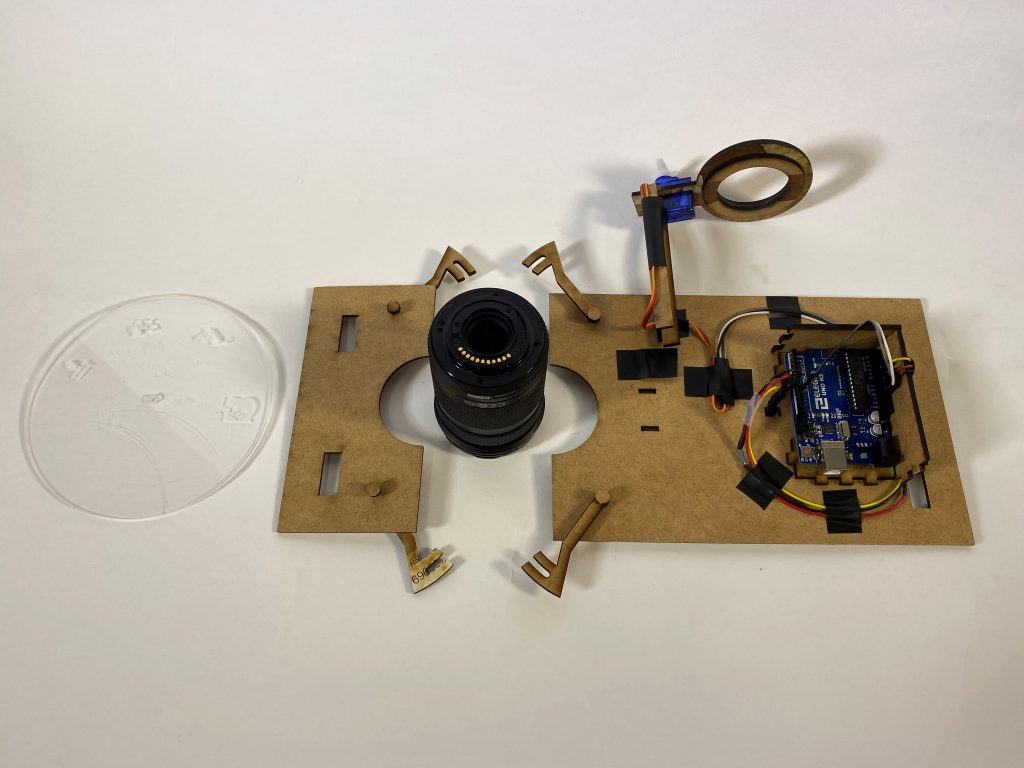
The disassembled final prototype demonstrating interchangeability and for reproducibility.
Design Process
The first design direction was to use laser cutouts of wood to cast sharp shadows without the need of a focusing agent. This design first hinged on whether the light had a diffusing cover or not, since diffuse scattering would not cast the sharp shadows necessary for observable projections. Fortunately observation of how the street light cast clear shadows of nearby branches revealed that the lights could produce complex images using a material with different transparency levels, however experimentation revealed that the cut out’s shadow was illegible at further distances . This is because the streetlights used an array of 10 LEDs, and the multiple light sources caused interference between each source’s diffraction around the cut edges, causing a blurriness that worsened with distance and edge proximity.
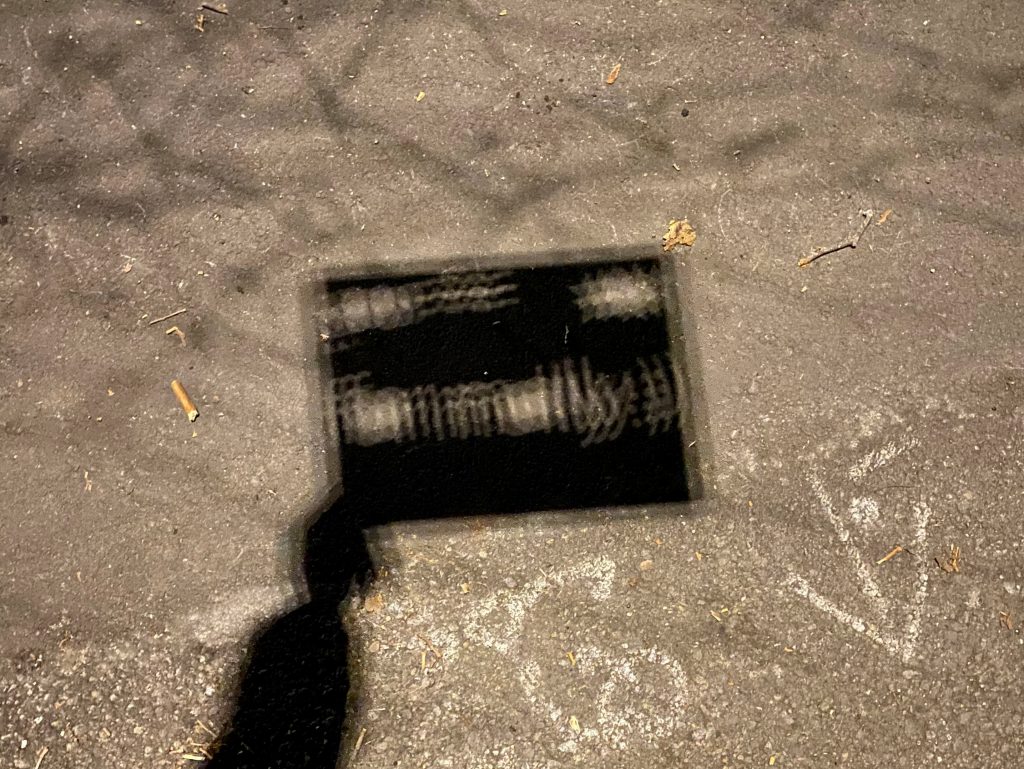
The plywood cut out reading “for molly :)” at an elevation of about ten feet demonstrating the diffraction interference issue.
The next iteration took inspiration from a LED slide projector that used 35 mm film. Replacing the film with a square engraved acrylic images projected through a commercial Olympus 40-150 mm lens demonstrated the ability to focus custom images, however retained blurriness around the edges. This gave birth to the final design of a circular disk containing all images, since there would be no visible cut edges and could be easily rotated to switch images using a servo motor, adding an interactive component to the project.
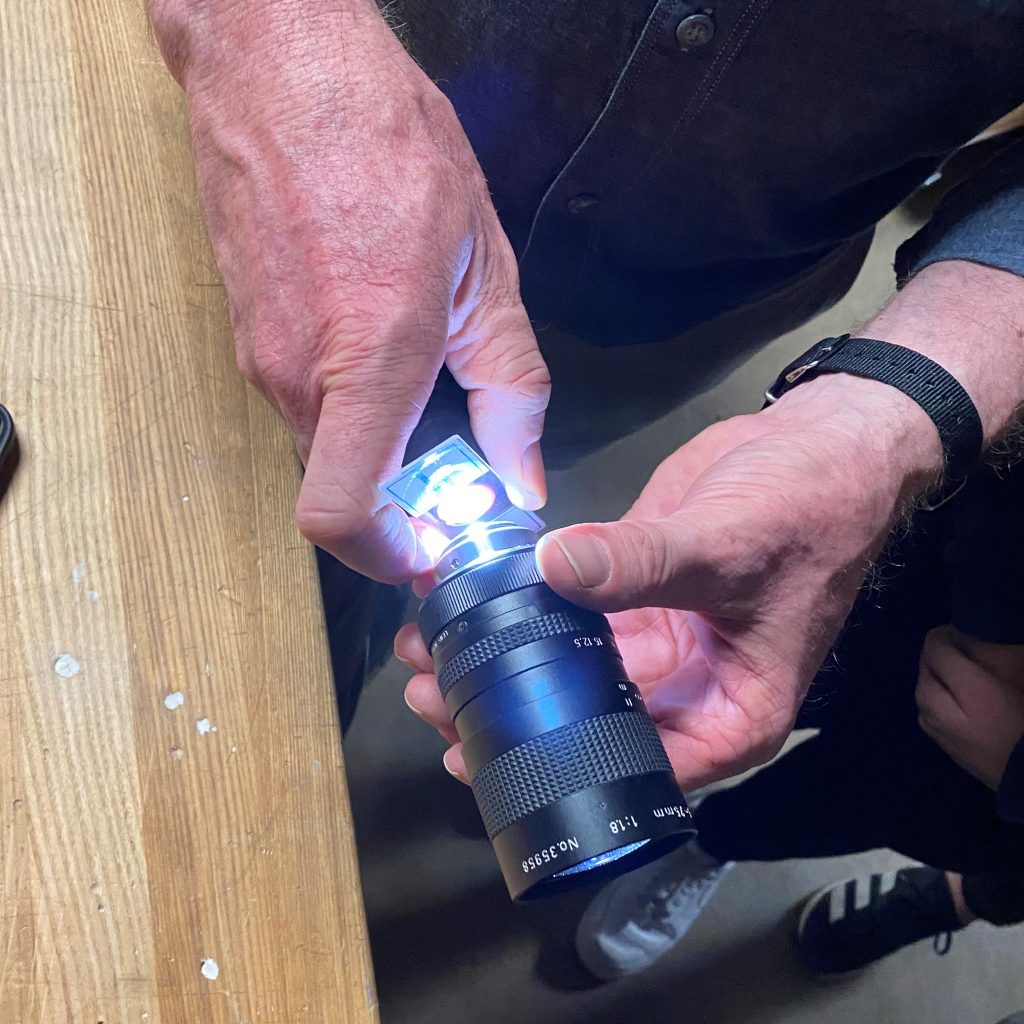
Microscope slides with film attached inspiring the acrylic etched images design.
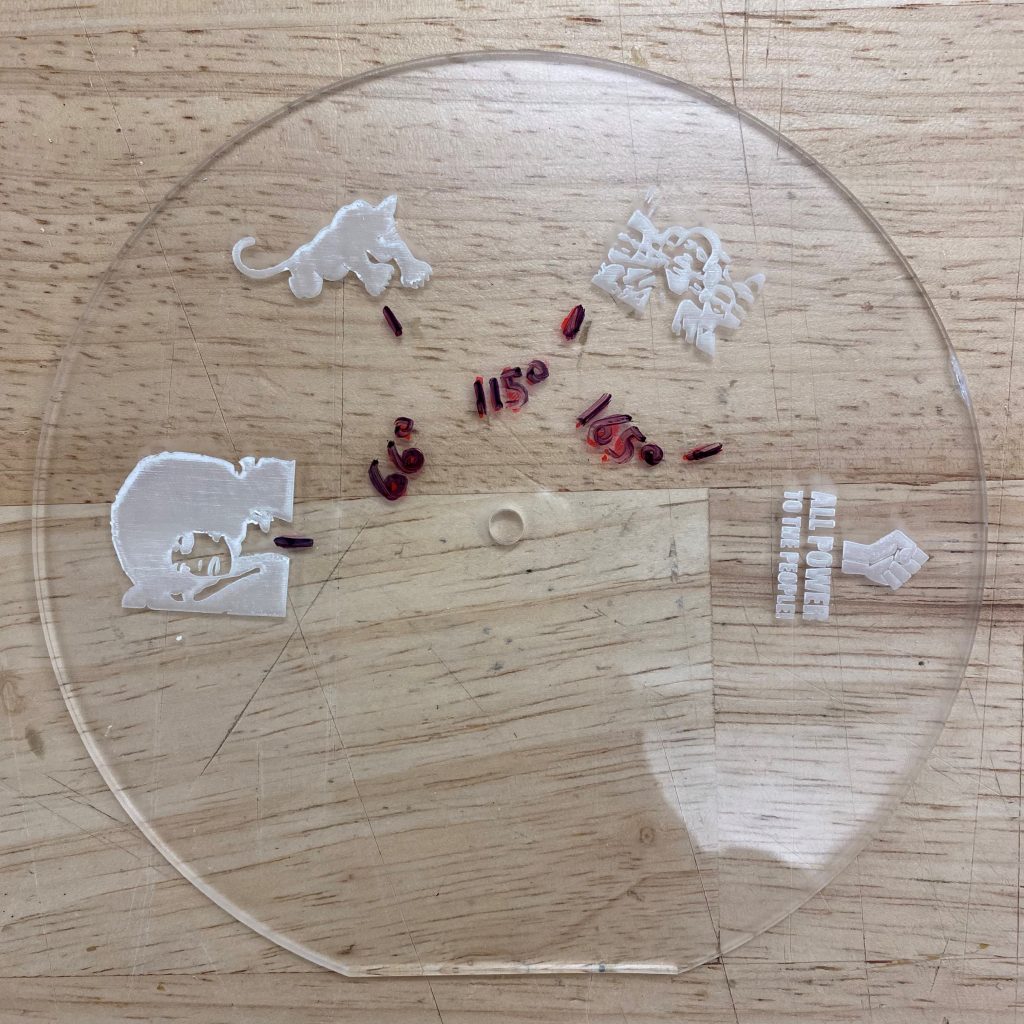
Four Black Panther Party images etched into acrylic with actual rotation degrees marked for correction.
The servo motor was controlled by an Arduino Uno and photosensor. The servo was instructed to move forward between each images when the photosensor received a signal higher than ambient light provided by a low power laser. This process continues to work from a illumination distance of 30 feet, proving its practical use when suspended from a streetlight. One interesting note is that the servo motor does not rotate an even distance between images, despite being directed too, meaning etch image placement must be experimentally measured.

The four Black Panther Party images being cycled through.
The base of the projector design is the size of the LED matrix to reduce light pollution and increasing contrast of the projected image. The front of the lens fits into the larger hole on the bottom of the base and the two sides of the base can be clamped together. Hooks are used on the bottom and top of the base in order to secure the lens placement, and allow for customizable clamping based on the size of different lenses. Two smaller rectangular cuts are made next to the camera hole for servo motor support beams and provide planar support to counteract the rotational motion of the servo motor. The focus distance of the arcylic images can be adjusted along these servo support design by shifting the beams upwards further through the base and stacking rings around the camera lens.
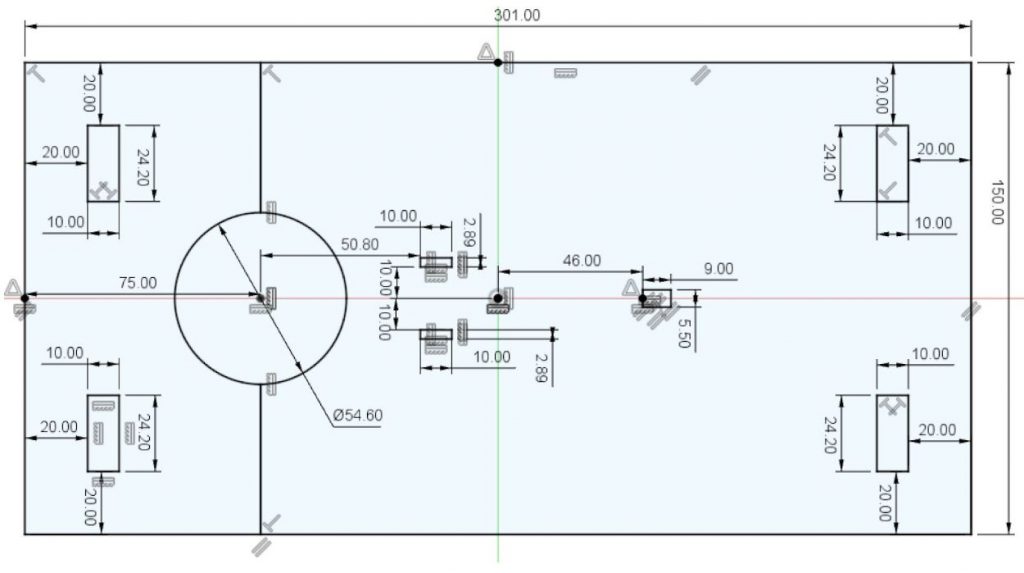
Drawing and dimensions of the assembly base with dark lines indicating cuts.
Future work on the project include attaching the base on the streetlight using straps, a wider photosensor area for easier activation from 30 feet away, and a solar powered energy reserve.